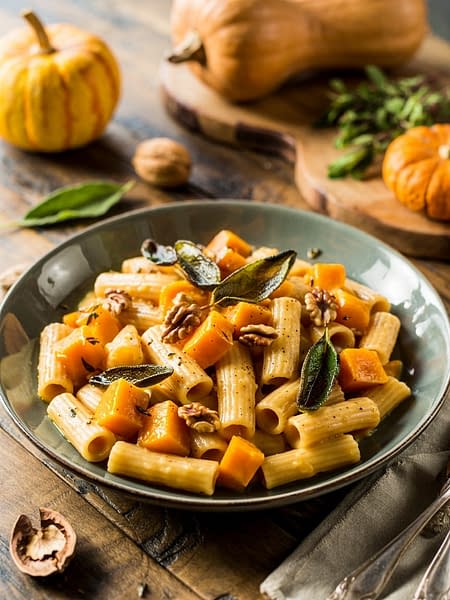Miso glazed eggplant is one of those dishes that feels both luxurious and approachable at the same time. With its deeply savory-sweet glaze and tender, silky eggplant flesh, it’s a dish that captures the essence of Japanese comfort food. Perfect for weeknight dinners, casual lunches, or elegant dinner parties, miso glazed eggplant is a versatile recipe that can be enjoyed on multiple occasions.
Eggplant, or aubergine as it’s known in many parts of the world, has a naturally mild flavor. This makes it a perfect canvas for the rich umami punch of miso paste, complemented by honey, soy sauce, sesame oil, and aromatics like garlic and ginger. When roasted, the eggplant’s flesh becomes buttery soft, absorbing the sweet-salty glaze and creating a caramelized top that is irresistible.
In this guide, we’ll explore every detail of making miso glazed eggplant—from selecting the best ingredients and prepping the eggplant to glazing, roasting, and serving suggestions. Whether you’re a beginner in the kitchen or a seasoned home cook, this recipe will help you create a dish that tastes like it came straight from a Japanese restaurant.
Ingredients: Choosing the Best for Flavor and Texture
The beauty of miso glazed eggplant lies in its simplicity. With just a handful of high-quality ingredients, you can achieve deep, complex flavors. Here’s what you’ll need and why each component matters.
For the Eggplant
- 1 large eggplant (choose firm, smooth-skinned, and evenly shaped)
- 1 tablespoon neutral oil (such as sunflower, canola, or grapeseed)
- A pinch of salt (to enhance natural flavor)
Choosing the right eggplant is crucial. Look for one that feels heavy for its size, with shiny, unblemished skin. The flesh should be firm, not spongy or soft. A larger eggplant works well for this recipe because it yields more surface area for scoring and glazing.
For the Miso Glaze
- 2 tablespoons white miso paste (shiro miso)
- 1.5 tablespoons honey (or sugar for a vegan alternative)
- 1 tablespoon soy sauce
- 1 tablespoon rice vinegar
- 1 tablespoon sesame oil
- 1 tablespoon warm water (to thin the glaze)
- 1 clove garlic (minced)
- 0.5 teaspoon freshly grated ginger
White miso paste is ideal because of its mild, slightly sweet flavor. The combination of honey, soy sauce, and sesame oil creates a balanced glaze that caramelizes beautifully during roasting. Garlic and ginger add aromatic depth and a subtle zing that complements the richness of the miso.
For Garnish
- 1 teaspoon toasted sesame seeds
- 1 tablespoon sliced green onions
- Optional: a small handful of fresh coriander (cilantro)
These garnishes are not just for visual appeal—they add texture, freshness, and a burst of color, making the dish inviting and restaurant-worthy.
Step-by-Step Instructions: How to Make Miso Glazed Eggplant
This recipe is divided into clear steps to ensure even beginners can achieve perfect results.
Preparing the Eggplant
Start by washing the eggplant thoroughly and patting it dry. Slice it in half lengthwise and score the flesh in a crisscross pattern, being careful not to cut through the skin. Scoring allows the glaze to penetrate and ensures even cooking.
Next, brush the eggplant with a small amount of neutral oil and sprinkle lightly with salt. The oil helps in roasting, while the salt enhances the natural sweetness of the eggplant.
Roasting the Eggplant
Place the eggplant halves on a baking tray lined with parchment paper, flesh side up. Roast in a preheated oven at 220°C for approximately 15 minutes. The goal here is to soften the flesh and start browning the edges. The eggplant should feel tender when pierced with a fork, but not mushy.
Preparing the Miso Glaze
While the eggplant roasts, prepare the glaze. In a small mixing bowl, combine miso paste, honey, soy sauce, rice vinegar, sesame oil, minced garlic, grated ginger, and warm water. Whisk until smooth. The consistency should be thick but easily spreadable. Taste the glaze and adjust sweetness or saltiness according to preference.
Glazing the Eggplant
Once the eggplant has partially roasted, remove it from the oven and brush the miso glaze generously over the scored flesh. Make sure the glaze seeps into the cuts for maximum flavor infusion.
Return the eggplant to the oven and roast for another 10 minutes. This step allows the glaze to bubble and caramelize, forming a slightly sticky, flavorful crust. Keep an eye on the eggplant to prevent burning, especially at the edges.
Final Touches
After roasting, let the eggplant rest for 5 minutes. Then sprinkle with toasted sesame seeds, sliced green onions, and optional fresh coriander. Serve warm, ideally with steamed rice or as part of a vegetable platter.
Serving Suggestions: How to Enjoy Miso Glazed Eggplant
Miso glazed eggplant is incredibly versatile and can be served in multiple ways:
- As a side dish for Japanese-inspired meals, paired with miso soup, pickled vegetables, and steamed rice.
- On top of a grain bowl with quinoa or brown rice, avocado, and sesame seeds.
- As an appetizer, sliced into bite-sized pieces and served with a drizzle of extra glaze and microgreens.
- Alongside grilled tofu or tempeh for a complete vegetarian protein meal.
For a more indulgent presentation, serve the eggplant with a light sprinkling of crushed peanuts or a drizzle of chili oil for a spicy-sweet kick.
Tips for Perfect Miso Glazed Eggplant
- Choose firm, unblemished eggplants for the best texture.
- Scoring the eggplant allows the glaze to penetrate deeply.
- Do not over-roast initially; the eggplant should retain some structure before glazing.
- Adjust sweetness and saltiness of the glaze to your taste, as miso pastes vary in intensity.
- Use parchment paper for roasting to prevent sticking and simplify cleanup.
Variations: Customize Your Miso Glazed Eggplant
Vegan Option
Replace honey with maple syrup, agave, or sugar to make this recipe fully vegan without sacrificing flavor.
Spicy Miso Glaze
Add 0.5 teaspoon chili flakes or a small amount of chili paste to the glaze. This variation adds heat that pairs beautifully with the natural sweetness of the eggplant.
Protein Boost
Serve the eggplant with grilled tofu, tempeh, or halved boiled eggs for a more filling meal. For non-vegetarians, halal chicken or shrimp can be brushed with some of the glaze and roasted alongside the eggplant.
Alternative Garnishes
Experiment with crushed peanuts, toasted nori flakes, or fried shallots for extra texture and flavor. Fresh herbs like Thai basil or mint can also provide a refreshing contrast.
Storing and Reheating
Miso glazed eggplant can be stored in an airtight container in the refrigerator for up to 2 days. To maintain texture, reheat in a preheated oven at 180°C for 5–7 minutes rather than microwaving. The oven helps retain the glaze’s shine and prevents the flesh from becoming too mushy.
Leftovers can also be served cold in salads or as a topping for grain bowls, making this recipe perfect for meal prep.
Conclusion
Miso glazed eggplant is more than just a side dish; it’s a celebration of flavors and textures. Its tender, caramelized flesh paired with a rich umami glaze makes it both comforting and sophisticated. Easy to prepare, naturally vegetarian, and adaptable for different occasions, this recipe is perfect for anyone looking to elevate simple ingredients into a memorable meal.
With a few tips, creative variations, and careful preparation, you can make miso glazed eggplant a regular favorite in your kitchen. Whether served at a casual weeknight dinner or a special gathering, this dish is sure to impress and delight your family and friends.
Miso Glazed Eggplant Recipe
This miso glazed eggplant delivers a rich, savory-sweet flavor with perfectly caramelized edges and melt-in-your-mouth softness. Made with a simple Japanese-style miso glaze, this dish is naturally vegetarian, packed with umami, and ideal as a side dish, appetizer, or light lunch. It’s an easy, healthy, and flavorful recipe that works beautifully for weeknight meals or elegant dinners.
Ingredients
For the Eggplant
For the Miso Glaze
For Garnish
Instructions
Prepare the Eggplant
- Score the flesh of each eggplant half in a crisscross pattern without cutting through the skin. This helps the glaze seep in and ensures even cooking. Lightly brush the surface with oil and sprinkle a small pinch of salt.
Roast the Eggplant
- Place the eggplant halves on a baking tray lined with parchment paper, flesh side up. Roast at 220°C for 15 minutes until the flesh has softened and the edges begin to brown.
Make the Miso Glaze
- In a small bowl, mix miso paste, honey, soy sauce, rice vinegar, sesame oil, minced garlic, grated ginger, and warm water until smooth. The glaze should be thick but spreadable.
Glaze the Eggplant
- Remove the roasted eggplant from the oven. Spread a generous layer of miso glaze over the surface of each half, ensuring it reaches all the scored lines. Allow it to soak in for a minute.
Caramelize the Glaze
- Return the eggplant to the oven and roast for another 10 minutes. The glaze should bubble, darken slightly, and create a caramelized top. Rest for 5 minutes before serving so the flavors settle.
Add Garnishes
- Finish with toasted sesame seeds, sliced green onions, and optional coriander before serving. Serve warm.
Note
Miso type: White miso (shiro miso) gives a mild, slightly sweet flavor. Red miso will create a saltier, stronger glaze.
Vegan option: Replace honey with sugar, maple syrup, or agave.
Add protein: Serve with tofu, steamed rice, or grilled chicken (halal).
Storage: Refrigerate leftovers in an airtight container for up to 2 days. Reheat in the oven to maintain texture.
Make it spicy: Add 0.5 tsp chili flakes or a little chili paste to the glaze.








